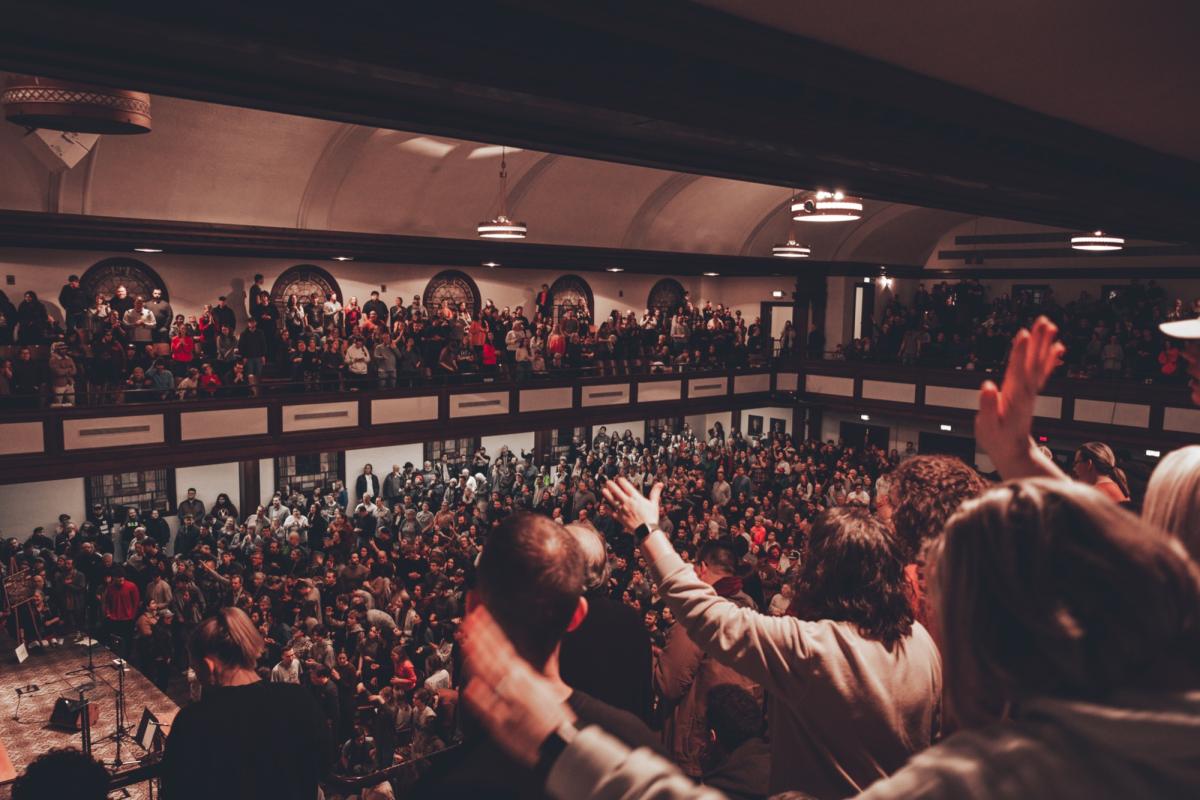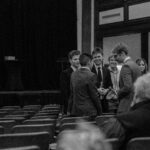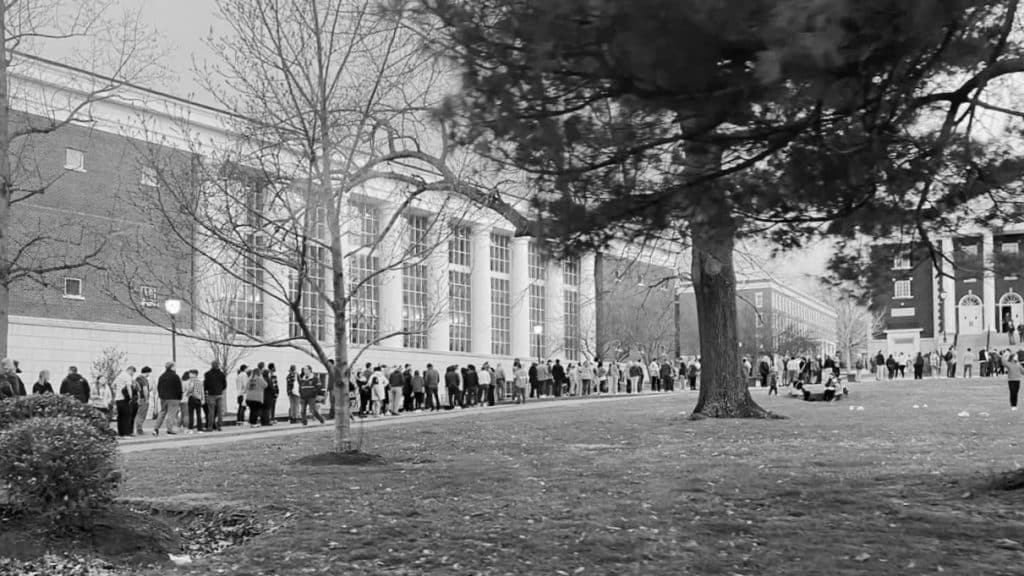It has been a year since the chapel service that didn’t end.
On Wednesday, Asbury students and faculty gathered in Hughes Auditorium to remember and celebrate the events that took place on their campus last year.
As of Feb 8, a year has passed since a few students decided to stay behind after chapel in Hughes. These chapel services take place three times a week and typically last 50 minutes. This one, however, lasted roughly 384 hours. What started with a small group of students continuing to pray and worship after the seats of Hughes Auditorium cleared turned into a sixteen-day event that brought an estimated 50,000 visitors to the small town of Wilmore. These visitors waited in lines that wrapped around the perimeter of campus, waiting to answer the question: “What was happening in Hughes?”
A year later, members of the Asbury community continue to ask themselves that same question.
“It is a story that we are all still learning, and it is a story that is still being written,” said Asbury faculty member Jeannie Banter.
At the time of the events last February, the sentiment echoed by Asbury University’s students and staff was one of wonder and amazement. This sentiment remains consistent, even a year after the events took place. “Two realities are true at the same time,” campus pastor Greg Haseloff told students at the anniversary celebration. “The Outpouring of the spirit of God was beautiful. And we are still figuring it out a year later.” He addressed students, saying that we are still working out the story’s “complete meaning.”
Asbury University has had a history of revivals, including the most well-documented in 1970, known to have lasted 144 hours.
Some 53 years later, Asbury found itself in familiar yet starkly new territory. The addition of international media coverage and the immediacy of social media made it so that the story unfolding at Asbury was quickly spread all across America and beyond. Students’ words, songs, and prayers went out to the world.
The truly jarring events began when the world came to them.
Visitors began showing up from everywhere: South Korea, The Netherlands, Uganda, and beyond.
Christian and secular news outlets arrived with cameras and microphones. It started locally, but soon, pictures of Hughes Auditorium appeared in The New York Times and Time Magazine.
Tens of thousands of strangers poured into the Asbury Community.
It was amazing. It was also frightening.
“We kind of felt like we were in a lifeboat,” said Sarah Baldwin, Vice President of Student Life at Asbury. At a lunch event, Baldwin and much of the ministry team and PR team of the university shared some of the details of how they managed the unprecedented events.
One of the primary points of discussion among the PR team was the decision to stop live-streaming the services and asking that visitors not record inside Hughes. The team highlighted the intensely private nature of some of the stories being shared. Asbury’s Vice President of Enrollment and Marketing, Jennifer McChord, spoke alongside Abby Laub, the Director of Strategic Communications. Through tears, McChord said they “didn’t want Asbury to be seen as advertising something so personal.”
The year anniversary of the celebration highlights the complexity of the events, even 365 days after they took place. Christian and non-Christian media were both baffled by these events. Aaron Griffith wrote in a piece for Time Magazine that “it’s hard to know what to do. It’s hard because, by definition, a revival transcends our human understanding and comprehension.”
Zach Meerkreebs, pastor-in-residence at Asbury University, spoke in the chapel the day the Outpouring began. Over the past year, he has served as a prominent figure in helping the public begin to understand the Outpouring. “It was hard,” he said. He described the challenges of the past year and how they have stretched him, and he knows that they have stretched students.
“Christ did not come to cancel our humanity,” Meerkreebs said. “So I have to sleep. I have to eat. God didn’t come to make us superheroes.” He reflected on his own struggles to navigate the past year. “It has been disorienting, but it doesn’t mean that it was a bad thing that happened,”
As the voices of Asbury itself have reflected, the events of February 2023 are not simple. It would be difficult to argue that 50,000 visitors on campus is not an intrusion on the lives of students and staff. During those sixteen days, some students spent their days in Hughes with their hands raised. Other students, including many Christian students, stayed in their dorms trying to block out the 2 a.m. shouts from outside their window. Meerkreebs touched on the complexity of the response, saying, “I think it’s worth remembering and celebrating with an immense amount of grace and gentleness for those that don’t want to celebrate.” The complexities are infinite, and a year later, thoughts and feelings are still just as messy as they were during the midst of it all.
The anniversary chapel was a celebration. It was also an acknowledgment of the events and the different responses to them. In a benediction to the students after the anniversary service, Meerkreebs left Asbury with a prayer and a challenge: “Fall back in love with the ordinary.” It was not an attention-grabbing message or a revved-up cry for the Spirit’s return. Each statement on Hughes’s stage echoed the idea that spirit was still present, even after crowds dispersed. It was a challenge to bring our memory of the extraordinary into the ordinary parts of our lives.
One year later, there is still no clear answer as to why or how this occurred. All anyone can seem to agree on is that something happened. Whether someone believes it was the Holy Spirit or merely a sociological phenomenon, Asbury and the rest of the world are still processing what happened last February. Maybe Haseloff put it best during his anniversary statement when he said, “The story is still unfolding.”








